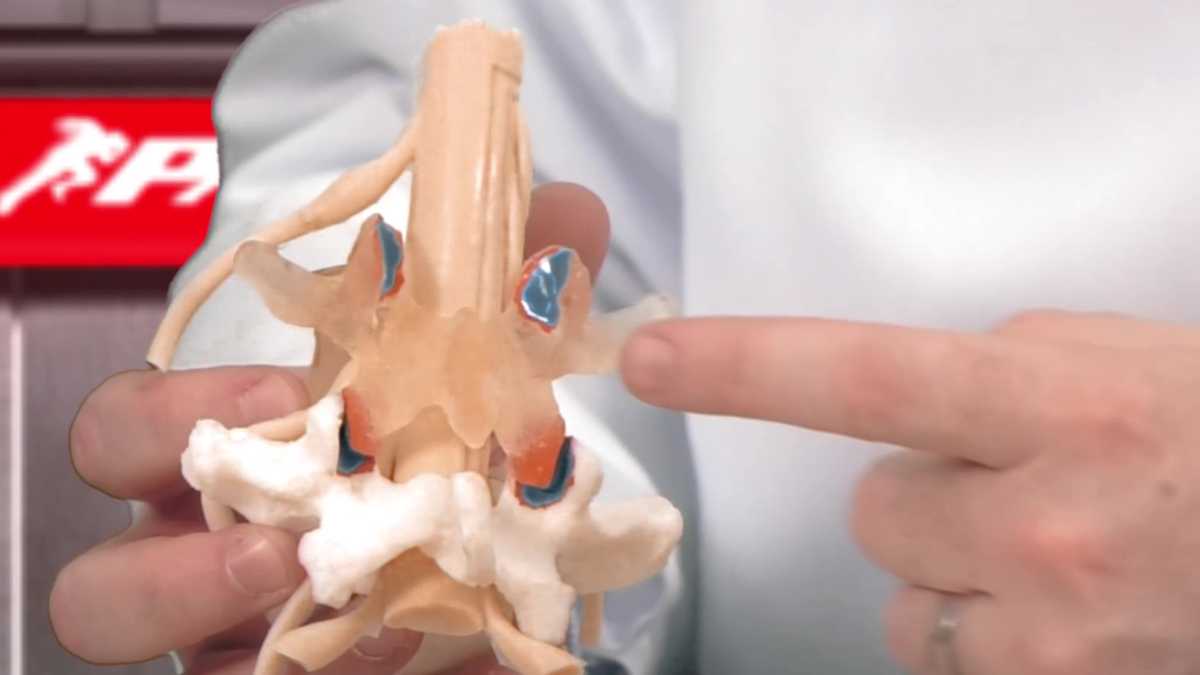“Preventing Pediatric Spondylolisthesis” with Dr. Jason Lowenstein
In this short video interview, Dr. Jason Lowenstein, Director of Atlantic Health System’s Scoliosis & Spinal Deformity Department, sits down with Bill Parisi, founder of the Parisi Speed School, to discuss a common form of spinal injury that affects pediatric athletes: spondylolisthesis. Also known as “spondies,” spondylolisthesis affects 1 in 10 young athletes, particularly those who regularly hyperextend the spine like gymnasts and offensive linemen.
Are you worried that your child is at high-risk for developing spondies? If so, listen to Dr. Jason Lowenstein explain his top tips for avoiding this painful condition. If you are concerned that your child may have already suffered a spondie injury, then contact Dr. Jason Lowenstein of The Advanced Spine Center today! Your child may qualify for conservative or minimally invasive interventions that obviate the need for major surgery down the road.
Video Transcript:
Parisi: Welcome back! I am here with Dr. Lowenstein, who is the director here at Atlantic Health. Scoliosis and spinal deformity are your departments in terms of where you spend your time here at Atlantic Health. Doc, it’s really interesting to talk about the spine, especially with younger kids and athletes and all different types of spinal injuries, where you have spondylolisthesis, slipped discs, disc bulges, or herniations. But, we always talk specifically about the nickname “spondies.” Can you kind of go over what this injury is because a lot of young athletes tend to get these. I’ve read a study that one out of every ten young athletes have this “spondie” and some don’t even know it.
Dr. Lowenstein: It’s extremely common. It happens oftentimes in athletes but it can really happen in any young, developing child. It can happen in adults too. And, basically, it’s usually due to repetitive hyperextension of the spine. So, the spine is constantly extending and as it does so, it can cause an injury to this area of the spine called the pars, which connects the top of the back of the spine to the bottom. When that part breaks, it causes pain and it’s the spondylolisthesis, the “spondee”, that needs to be treated.
Parisi: Now, most commonly this occurs in gymnasts because they’re always bending backward, right? Offensive linemen, when they hyperextend as they’re trying to block.
Dr. Lowenstein: Absolutely.
Parisi: Or a child who just might fall wrong or get tackled the wrong way. They can hyperextend and you can get a spondylolisthesis. You can have a stress reaction to the pars.
Dr. Lowenstein: It happens most commonly, classically in athletes who do repetitive hyperextension. So, you’re right. Gymnasts, football players (particularly offensive linemen who are constantly taking hits up high). Extending your back multiple times over time is typically what results in this. It can happen really across the board in any type of athlete, but those are the classic ones.
Parisi: What do you say to parents out there, coaches, how do you prevent this? How do you become more aware of it because a lot of kids might be walking around with some type of reaction in that area. Maybe not pain yet, but pain is on the verge.
Dr. Lowenstein: Well, prevention is really a part of this. Some theories are that there is a mismatch with the muscular strength in your spine and the muscles that surround your spine. That if you strengthen your abdominal muscles and your core to create an overall relative flexion of the spine, it might decrease the risk of developing spondylolisthesis. So, we often recommend to our athletes: Do a lot of core strength building, crunches, abdominal strength exercises. Because, a lot of times, lumbar paraspinal muscles are way overdeveloped in comparison to your abdominal muscles. So, if you can strengthen those, it can decrease the risk of developing this long-term. Particularly in athletes who get a spondee and we treat it and it goes on it heal, we really try to get them to strengthen their core, their abs, to prevent this from happening again.
Parisi: So important. And, we’ve done a lot of research in the area of core strengthening and core stiffening, plank work, and isometric core work which is vital. But, I think it’s so important for parents to realize: “Hey, we want to avoid that hyperextension of the spine,” because repetitive motions can be dangerous and cause this reaction to the spine. Thanks so much. Really, this has been informative.
Dr. Lowenstein: Oh, it’s my pleasure!
Parisi: And, we look forward to more future spine segments, learning about spine health.
